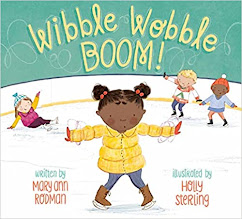This time around, each TeachingAuthor is answering the #1 Question
she receives most often from her students and Readers.
I knew mine by heart: What's the one thing about Writing for Children
you wish you knew when you first began?
Ironically, my tried-and-true response also answers the #1 Question I
ask myself when writing my own stories and/or reading the stories of
the writers I teach and coach: Why isn't this manuscript working?!
The answer to both questions?
Every story demands an Emotional Plotline if it's to resound in the
Reader's heart.
Thanks to Aristotle, I knew all about the PHYSICAL Plotline and how
it structured a story.
The inciting event, the obstacles and struggles, the climax, the
surprise, the resolution.
And I excelled at determining my character's.
Unfortunately, however, after years of toiling on task, I learned
that wasn't my job.
It's the character's!
Character determines plot. Period.
No more pulling the strings of my character a la Master Geppetto,
guiding actions and re-actions, assigning accompanying emotions
as he seeks to realize his dream, solve his problem, fulfill his need.
No more writing above my character's plotline, unplugged and
disconnected.
I needed to plumb the depths of my character's heart to learn the
WHY of his WHAT, his Or else..., so my story offered an
EMOTIONAL Plotline.
What misbelief did his hurting heart hold?
What was his bedtime prayer when nighttime came?
I shared several exercises for mining a character's heart in a 2017
TeachingAuthors post, as did Ruth Vander Zee in our January,
2018 interview and my fellow TA Carmela Martino in her 2017
But, it also turns out, I needed to (bravely) plumb the depths of
my own heart.
Marian Dane Bauer's What's My Story? A Young Person's Guide
to Writing Fiction (Clarion, 1992) took my writing to the Next
Level, illuminating a Truth I'd been unwilling to confront.
The writer needs to put his story into the story he's telling.
That's the only way the Emotional Plotline can be all it must be
to do its job for the Reader.
Mind you: the writer needn't have experienced the actual
inciting incident; he needs only to reconnect with the feelings
that incident provoked, that "I know just how that feels"
sentiment.
In other words, the writer must first connect with the character
if the Reader is to do ths same, if the Reader is to have what
Jane Yolen called the Recognizable Sentiment.
"One heart in hiding, reaching out to one another," Katherine
Paterson wrote of her two characters Jeff Arons and Leslie
Burke in Bridge to Terabithia.
IMHO: this beautiful insight speaks of the character-writer
connection, too, as well as, ultimately, the character-Reader
connection.
Fortunately, it wasn't too late in my Writer's Journey to learn
the Why and Wherefore of the Emotional Plotline (the true
inside story) vs. the Physical Plotline (the outside actions.)
A story works as it should, as it must, when all three hearts
are inter-connected - the character's, the writer's, the Reader's.
Only then can the story's heart cause another's heart to beat
and burst.
I liken the connection to the three notes of a fine perfume -
the top note, middle note, bottom note - that allow the
singular scent to be known, register and be remembered.
My favorite Coach, Joe Maddon, said it best, though he was
writing about the game of baseball and how it should be
played: "It's all about the heartbeat."
Here's to keeping ours and our Readers' hearts beating!
Esther Hershenhorn
P.S.
Thanks to Ramona and PLEASURES FROM THE PAGE
for hosting today's Poetry Friday.








































.JPG)









